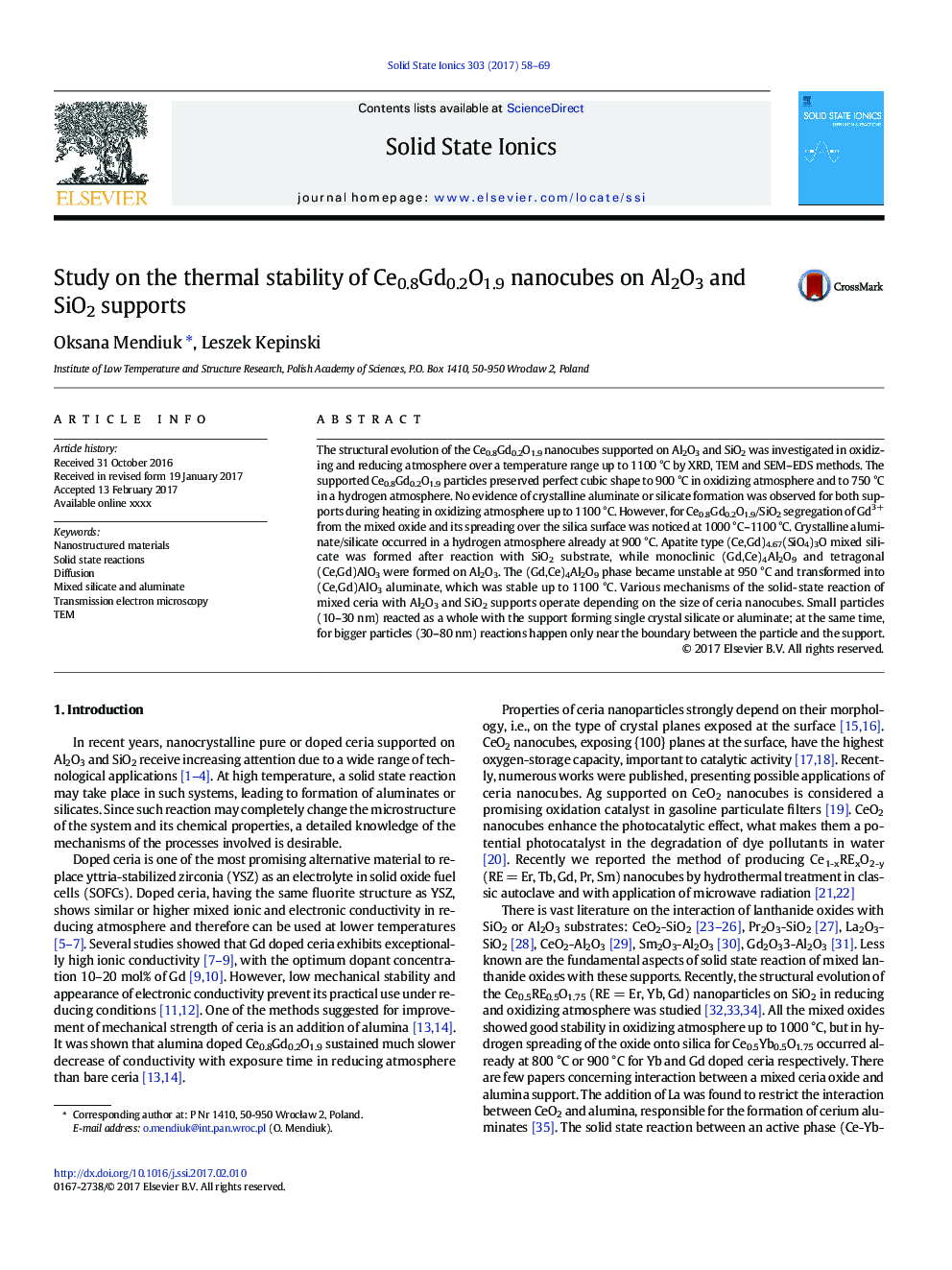| Article ID | Journal | Published Year | Pages | File Type |
|---|---|---|---|---|
| 5150593 | Solid State Ionics | 2017 | 12 Pages |
Abstract
The structural evolution of the Ce0.8Gd0.2O1.9 nanocubes supported on Al2O3 and SiO2 was investigated in oxidizing and reducing atmosphere over a temperature range up to 1100 °C by XRD, TEM and SEM-EDS methods. The supported Ce0.8Gd0.2O1.9 particles preserved perfect cubic shape to 900 °C in oxidizing atmosphere and to 750 °C in a hydrogen atmosphere. No evidence of crystalline aluminate or silicate formation was observed for both supports during heating in oxidizing atmosphere up to 1100 °C. However, for Ce0.8Gd0.2O1.9/SiO2 segregation of Gd3+ from the mixed oxide and its spreading over the silica surface was noticed at 1000 °C-1100 °C. Crystalline aluminate/silicate occurred in a hydrogen atmosphere already at 900 °C. Apatite type (Ce,Gd)4.67(SiO4)3O mixed silicate was formed after reaction with SiO2 substrate, while monoclinic (Gd,Ce)4Al2O9 and tetragonal (Ce,Gd)AlO3 were formed on Al2O3. The (Gd,Ce)4Al2O9 phase became unstable at 950 °C and transformed into (Ce,Gd)AlO3 aluminate, which was stable up to 1100 °C. Various mechanisms of the solid-state reaction of mixed ceria with Al2O3 and SiO2 supports operate depending on the size of ceria nanocubes. Small particles (10-30 nm) reacted as a whole with the support forming single crystal silicate or aluminate; at the same time, for bigger particles (30-80 nm) reactions happen only near the boundary between the particle and the support.
Related Topics
Physical Sciences and Engineering
Chemistry
Electrochemistry
Authors
Oksana Mendiuk, Leszek Kepinski,
